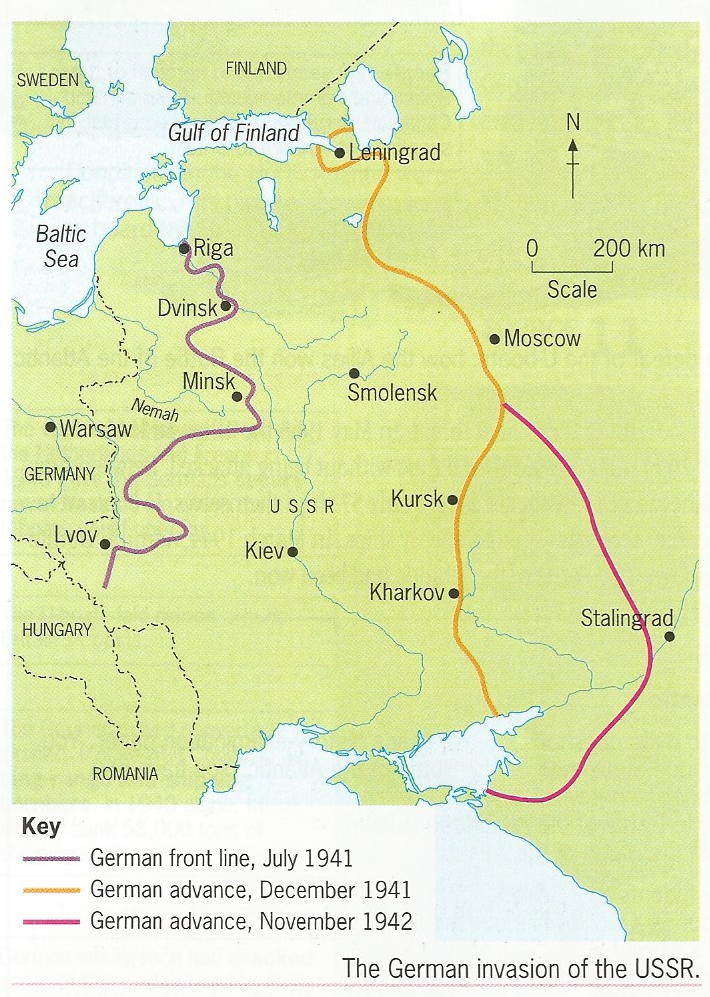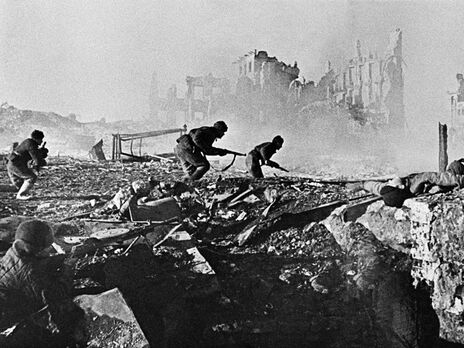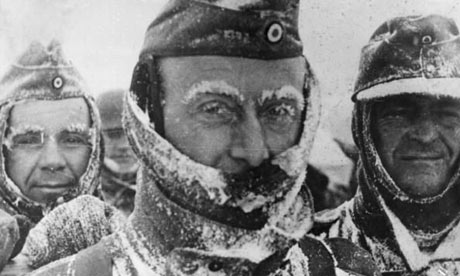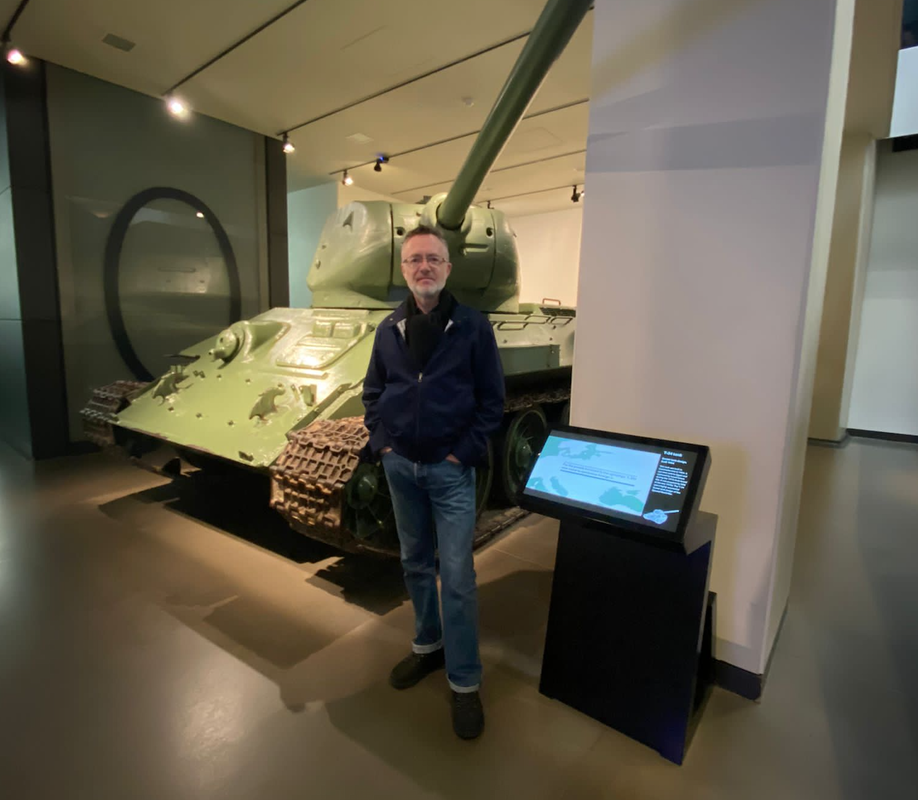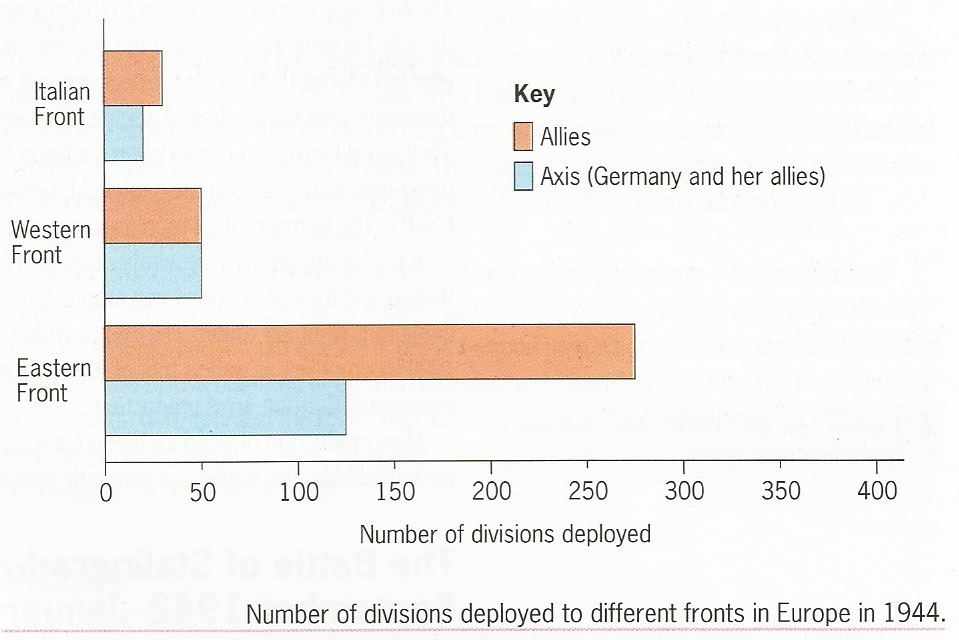Lesson 7 - The war becomes global - 2. The Eastern Front
|
Hitler prepared a huge army of 3 million men, 3,580 tanks and 1,830 aircraft for the invasion of Russia. Remembering the Russian defeats in 1914, the chaos which enveloped Russia for much of the interwar period and the wholesale slaughter of the upper ranks of the Red Army in the purges of 1937, it is not at all surprising that Hitler thought that 'we have only to kick the door in and the whole rotten edifice will collapse'. He understood that the huge size of the USSR made it difficult to defeat, but reasoned that if he could drive Stalin's forces out of European Russia the Communists would be forced to sue for peace. Even over the much greater distance, the German Army's blitzkrieg tactics were successful. Hitler's front line was 1,000 kilometres into Russia by the end of 1941 (see below). |
|
In Berlin on 4 October 1941 Hitler announced to his people that the Soviet enemy was beaten and would never rise again. This turned out to be one of Hitler’s most profound misjudgements. Over the next two years the Soviet Union proved to be the graveyard of the German war effort. Few historians now dispute that the Eastern Front was the critical battleground of the Second World War... the Soviet system organised a massive war effort which blunted, and then reversed, the tide of Germany victory.
British historian, Professor Richard Overy, writing in 2000
Why was 1941 a turning point?
In June 1941, Hitler launched Operation Barbarossa, the invasion of the Soviet Union. Over 3 million German soldiers participated in what was the largest military assault in history. They were assisted by smaller contingents from Romania, Hungary and Italy. Within months this invasion force had advanced hundreds of kilometres, vastly extending the territory of German controlled Europe. Approximately 5.5 million Soviet soldiers were taken prisoner by the Germans during the War and of these 3.3 million died, or were murdered, in captivity.
In June 1941, Hitler launched Operation Barbarossa, the invasion of the Soviet Union. Over 3 million German soldiers participated in what was the largest military assault in history. They were assisted by smaller contingents from Romania, Hungary and Italy. Within months this invasion force had advanced hundreds of kilometres, vastly extending the territory of German controlled Europe. Approximately 5.5 million Soviet soldiers were taken prisoner by the Germans during the War and of these 3.3 million died, or were murdered, in captivity.
However, Germany was unable to achieve victory; the Soviets were able to concede territory in order to buy time. Factories were moved east beyond the range of German planes and production steadily increased. In an ever more destructive war of attrition the Soviets could replace troop losses at a rate the Germans could not match.
During the first winter of the campaign the Soviets halted the German advance and over the following year fought bitterly to turn back the invaders. Following the devastating German defeat at Stalingrad in January 1943, the Red Army began to drive the Germans back in a series of emphatic victories. 75% of Germany’s total war casualties occurred on the Eastern Front where all restraints were abandoned in what had become a war of annihilation.
During the first winter of the campaign the Soviets halted the German advance and over the following year fought bitterly to turn back the invaders. Following the devastating German defeat at Stalingrad in January 1943, the Red Army began to drive the Germans back in a series of emphatic victories. 75% of Germany’s total war casualties occurred on the Eastern Front where all restraints were abandoned in what had become a war of annihilation.
|
|
Activity
Your textbook is detailed enough on the events on the Eastern Front. Begin by watching this recent short news report which helps to explain the significance of Stalingrad, perhaps the key battle of the Second World War. Complete the focus task on page 289. It is basically a plan for a five point essay that simply explains why the Soviet Union won on the Eastern Front. Begin by reading the text 286-289 looking for examples of where the Soviet people, technology, industry, air force and leaders contributed to the victory. For each of the five points try to include at least two pieces of factual evidence to support your answer. |
Extras and extension.
|
|
Streamed live on 7 Sept 2021
Live from Conway Hall, acclaimed historian Antony Beevor speaks about the role and experience of the Soviet Union during WW2, as well as the way that history has been interpreted and used in the modern day. |

